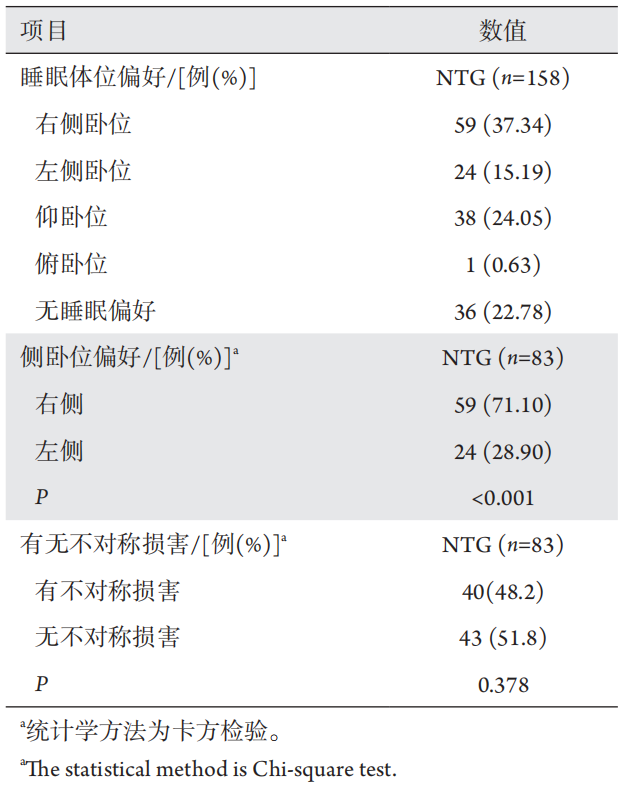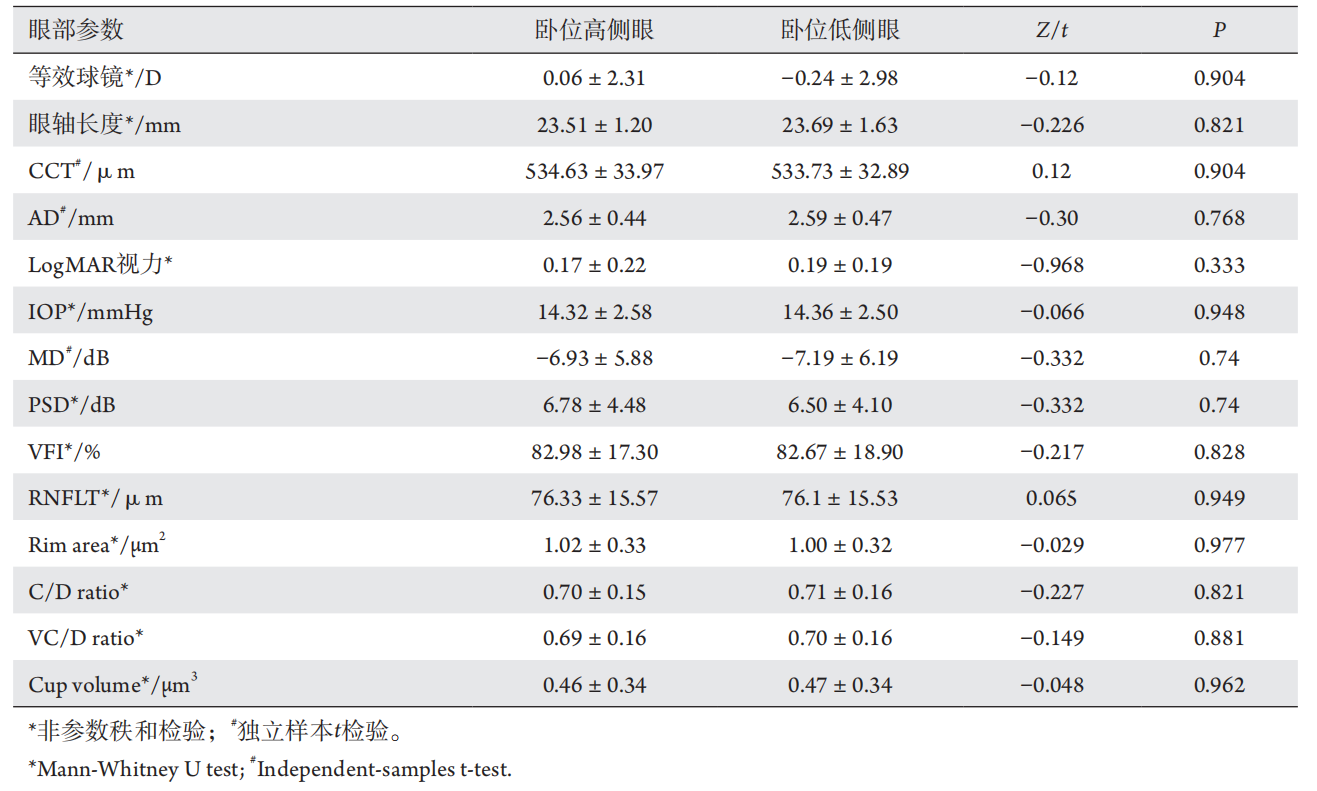1、Basner M, Fomberstein KM, Razavi FM, et al. American time use
survey: sleep time and its relationship to waking activities[ J]. Sleep,
2007, 30(9): 1085-1095.Basner M, Fomberstein KM, Razavi FM, et al. American time use
survey: sleep time and its relationship to waking activities[ J]. Sleep,
2007, 30(9): 1085-1095.
2、Lee CH, Kim DK, Kim SY, et al. Changes in site of obstruction in
obstructive sleep apnea patients according to sleep position: A DISE
study[ J]. Laryngoscope, 2015, 125(1): 248-254.Lee CH, Kim DK, Kim SY, et al. Changes in site of obstruction in
obstructive sleep apnea patients according to sleep position: A DISE
study[ J]. Laryngoscope, 2015, 125(1): 248-254.
3、Jain MR, Marmion VJ. Rapid pneumatic and Mackey-Marg applanation
tonometry to evaluate the postural effect on intraocular pressure[ J]. Br
J Ophthalmol, 1976, 60(10): 687-693.Jain MR, Marmion VJ. Rapid pneumatic and Mackey-Marg applanation
tonometry to evaluate the postural effect on intraocular pressure[ J]. Br
J Ophthalmol, 1976, 60(10): 687-693.
4、Kiuchi T, Motoyama Y, Oshika T. Relationship of progression of
visual field damage to postural changes in intraocular pressure in
patients with normal-tension glaucoma[ J]. Ophthalmology, 2006,
113(12): 2150-2155.Kiuchi T, Motoyama Y, Oshika T. Relationship of progression of
visual field damage to postural changes in intraocular pressure in
patients with normal-tension glaucoma[ J]. Ophthalmology, 2006,
113(12): 2150-2155.
5、Lee JY, Yoo C, Jung JH, et al. The effect of lateral decubitus position on intraocular pressure in healthy young subjects[ J]. Acta Ophthalmol,
2012, 90(1): e68-72.Lee JY, Yoo C, Jung JH, et al. The effect of lateral decubitus position on intraocular pressure in healthy young subjects[ J]. Acta Ophthalmol,
2012, 90(1): e68-72.
6、Lee TE, Yoo C, Kim YY. Effects of different sleeping postures on
intraocular pressure and ocular perfusion pressure in healthy young
subjects[ J]. Ophthalmology, 2013, 120(8): 1565-1570.Lee TE, Yoo C, Kim YY. Effects of different sleeping postures on
intraocular pressure and ocular perfusion pressure in healthy young
subjects[ J]. Ophthalmology, 2013, 120(8): 1565-1570.
7、Malihi M, Sit AJ. Effect of head and body position on intraocular
pressure[ J]. Ophthalmology, 2012, 119(5): 987-991.Malihi M, Sit AJ. Effect of head and body position on intraocular
pressure[ J]. Ophthalmology, 2012, 119(5): 987-991.
8、Kim KN, Jeoung JW, Park KH, et al. Effect of lateral decubitus position
on intraocular pressure in glaucoma patients with asymmetric visual
field loss[ J]. Ophthalmology, 2013, 120(4): 731-735.Kim KN, Jeoung JW, Park KH, et al. Effect of lateral decubitus position
on intraocular pressure in glaucoma patients with asymmetric visual
field loss[ J]. Ophthalmology, 2013, 120(4): 731-735.
9、Kim KN, Jeoung JW, Park KH, et al. Relationship between preferred
sleeping position and asymmetric visual field loss in open-angle
glaucoma patients[ J]. Am J Ophthalmol, 2014, 157(3): 739-745.Kim KN, Jeoung JW, Park KH, et al. Relationship between preferred
sleeping position and asymmetric visual field loss in open-angle
glaucoma patients[ J]. Am J Ophthalmol, 2014, 157(3): 739-745.
10、Tang J, Li N, Deng YP, et al. Effect of body position on the pathogenesis
of asymmetric primary open angle glaucoma[ J]. Int J Ophthalmol,
2018, 11(1): 94-100.Tang J, Li N, Deng YP, et al. Effect of body position on the pathogenesis
of asymmetric primary open angle glaucoma[ J]. Int J Ophthalmol,
2018, 11(1): 94-100.
11、Kaplowitz K, Blizzard S, Blizzard DJ, et al. Time spent in lateral sleep
position and asymmetry in glaucoma[ J]. Invest Ophthalmol Vis Sci,
2015, 56(6): 3869-3874.Kaplowitz K, Blizzard S, Blizzard DJ, et al. Time spent in lateral sleep
position and asymmetry in glaucoma[ J]. Invest Ophthalmol Vis Sci,
2015, 56(6): 3869-3874.
12、Liang YB, Jiang JH, Ou W, et al. Effect of community screening on
the demographic makeup and clinical severity of glaucoma patients
receiving care in urban China[ J]. Am J Ophthalmol, 2018, 195: 1-7.Liang YB, Jiang JH, Ou W, et al. Effect of community screening on
the demographic makeup and clinical severity of glaucoma patients
receiving care in urban China[ J]. Am J Ophthalmol, 2018, 195: 1-7.
13、Pan XF, Xu K, Wang X, et al. Evening exercise is associated with lower
odds of visual field progression in Chinese patients with primary open
angle glaucoma[ J]. Eye Vis (Lond), 2020, 7: 12.Pan XF, Xu K, Wang X, et al. Evening exercise is associated with lower
odds of visual field progression in Chinese patients with primary open
angle glaucoma[ J]. Eye Vis (Lond), 2020, 7: 12.
14、Lin SG, Cheng HH, Zhang SD, et al. Parapapillar y choroidal
microvasculature dropout is associated with the decrease in retinal
nerve fiber layer thickness: a prospective study[ J]. Invest Ophthalmol
Vis Sci, 2019, 60: 838-842.Lin SG, Cheng HH, Zhang SD, et al. Parapapillar y choroidal
microvasculature dropout is associated with the decrease in retinal
nerve fiber layer thickness: a prospective study[ J]. Invest Ophthalmol
Vis Sci, 2019, 60: 838-842.
15、周堃, 尚晓, 王晓燕, 等. 温州地区原发性开角型青光眼患者视野
缺损进展的危险因素分析[J]. 中华眼科杂志, 2019, 50(10): 777-784.
ZHOU K, SHANG X, WANG XY, et al. Risk factors for
visual field loss progression in patients with primary open-angle
glaucoma in Wenzhou area[ J]. Chinese Journal of Ophthalmology,
2019, 50(10): 777-784.周堃, 尚晓, 王晓燕, 等. 温州地区原发性开角型青光眼患者视野
缺损进展的危险因素分析[J]. 中华眼科杂志, 2019, 50(10): 777-784.
ZHOU K, SHANG X, WANG XY, et al. Risk factors for
visual field loss progression in patients with primary open-angle
glaucoma in Wenzhou area[ J]. Chinese Journal of Ophthalmology,
2019, 50(10): 777-784.
16、De Leon JM, Cheung CY, Wong TY, et al. Retinal vascular caliber
between eyes with asymmetric glaucoma[ J]. Graefes Arch Clin Exp
Ophthalmol, 2015, 253(4): 583-589.De Leon JM, Cheung CY, Wong TY, et al. Retinal vascular caliber
between eyes with asymmetric glaucoma[ J]. Graefes Arch Clin Exp
Ophthalmol, 2015, 253(4): 583-589.
17、Bengtsson B, Lindgren A, Heijl A, et al. Perimetric probability maps to
separate change caused by glaucoma from that caused by cataract[ J].
Acta Ophthalmol Scand, 1997, 75(2): 184-188.Bengtsson B, Lindgren A, Heijl A, et al. Perimetric probability maps to
separate change caused by glaucoma from that caused by cataract[ J].
Acta Ophthalmol Scand, 1997, 75(2): 184-188.
18、Katz J. A comparison of the pattern- and total deviation-based
Glaucoma Change Probability programs[ J]. Invest Ophthalmol Vis Sci,
2000, 41(5): 1012-1026.Katz J. A comparison of the pattern- and total deviation-based
Glaucoma Change Probability programs[ J]. Invest Ophthalmol Vis Sci,
2000, 41(5): 1012-1026.
19、Fujita M, Miyamoto S, Sekiguchi H, et al. Effects of posture on
sympathetic nervous modulation in patients with chronic heart
failure[ J]. Lancet, 2000, 356(9244): 1822-1823.Fujita M, Miyamoto S, Sekiguchi H, et al. Effects of posture on
sympathetic nervous modulation in patients with chronic heart
failure[ J]. Lancet, 2000, 356(9244): 1822-1823.
20、Miyamoto S, Fujita M, Sekiguchi H, et al. Effects of posture on cardiac
autonomic nervous activity in patients with congestive heart failure[ J].
J Am Coll Cardiol, 2001, 37(7): 1788-1793.Miyamoto S, Fujita M, Sekiguchi H, et al. Effects of posture on cardiac
autonomic nervous activity in patients with congestive heart failure[ J].
J Am Coll Cardiol, 2001, 37(7): 1788-1793.
21、Liu JHK, Sit AJ, Weinreb RN. Variation of 24-hour intraocular pressure
in healthy individuals: right eye versus left eye[ J]. Ophthalmology,
2005, 112(10): 1670-1675.Liu JHK, Sit AJ, Weinreb RN. Variation of 24-hour intraocular pressure
in healthy individuals: right eye versus left eye[ J]. Ophthalmology,
2005, 112(10): 1670-1675.
22、Sultan M, Blondeau P. Episcleral venous pressure in younger and older
subjects in the sitting and supine positions[ J]. J Glaucoma, 2003,
12(4): 370-373.Sultan M, Blondeau P. Episcleral venous pressure in younger and older
subjects in the sitting and supine positions[ J]. J Glaucoma, 2003,
12(4): 370-373.
23、Krieglstein GK, Waller WK, Leydhecker W. The vascular basis of the
positional influence on the intraocular pressure[ J]. Albrecht Von
Graefes Arch Klin Exp Ophthalmol, 1978, 206(2): 99-106.Krieglstein GK, Waller WK, Leydhecker W. The vascular basis of the
positional influence on the intraocular pressure[ J]. Albrecht Von
Graefes Arch Klin Exp Ophthalmol, 1978, 206(2): 99-106.
24、Longo A, Geiser MH, Riva CE. Posture changes and subfoveal
choroidal blood flow[ J]. Invest Ophthalmol Vis Sci, 2004, 45(2): 546.Longo A, Geiser MH, Riva CE. Posture changes and subfoveal
choroidal blood flow[ J]. Invest Ophthalmol Vis Sci, 2004, 45(2): 546.
25、Hara T, Hara T, Tsuru T. Increase of peak intraocular pressure during
sleep in reproduced diurnal changes by posture[ J]. Arch Ophthalmol,
2006, 124(2): 165-168.Hara T, Hara T, Tsuru T. Increase of peak intraocular pressure during
sleep in reproduced diurnal changes by posture[ J]. Arch Ophthalmol,
2006, 124(2): 165-168.
26、Kiuchi T, Motoyama Y, Oshika T. Postural response of intraocular
pressure and visual field damage in patients with untreated normal�tension glaucoma[ J]. J Glaucoma, 2010, 19(3): 191-193.Kiuchi T, Motoyama Y, Oshika T. Postural response of intraocular
pressure and visual field damage in patients with untreated normal�tension glaucoma[ J]. J Glaucoma, 2010, 19(3): 191-193.
27、Lee TE, Yoo C, Lin SC, et al. Effect of different head positions in lateral
decubitus posture on Intraocular pressure in treated patients with open�angle glaucoma[ J]. Am J Ophthalmol, 2015, 160(5): 929-936.e4.Lee TE, Yoo C, Lin SC, et al. Effect of different head positions in lateral
decubitus posture on Intraocular pressure in treated patients with open�angle glaucoma[ J]. Am J Ophthalmol, 2015, 160(5): 929-936.e4.
28、Seo H, Yoo C, Lee TE, et al. Head position and intraocular pressure in
the lateral decubitus position[ J]. Optom Vis Sci, 2015, 92(1): 95-101.Seo H, Yoo C, Lee TE, et al. Head position and intraocular pressure in
the lateral decubitus position[ J]. Optom Vis Sci, 2015, 92(1): 95-101.
29、Yoo C. Lateral sleep position and asymmetry in glaucoma[ J]. Invest
Ophthalmol Vis Sci, 2016, 57(6): 2543-2544.Yoo C. Lateral sleep position and asymmetry in glaucoma[ J]. Invest
Ophthalmol Vis Sci, 2016, 57(6): 2543-2544.
30、Ramli N, Nurull BS, Hairi NN, et al. Low nocturnal ocular perfusion
pressure as a risk factor for normal tension glaucoma[ J]. Prev Med,
2013, 57: S47-S49.Ramli N, Nurull BS, Hairi NN, et al. Low nocturnal ocular perfusion
pressure as a risk factor for normal tension glaucoma[ J]. Prev Med,
2013, 57: S47-S49.






